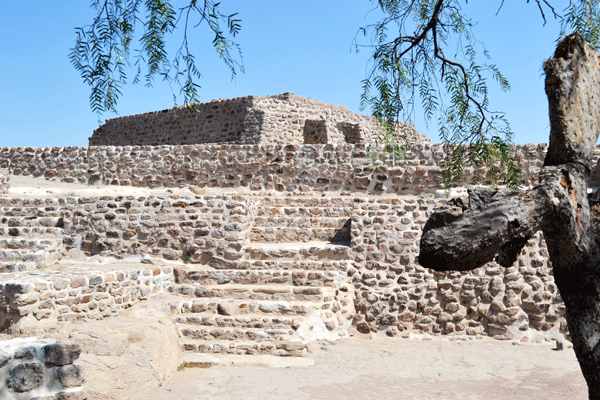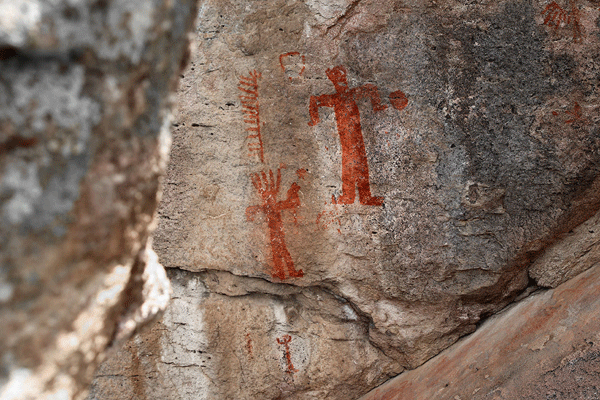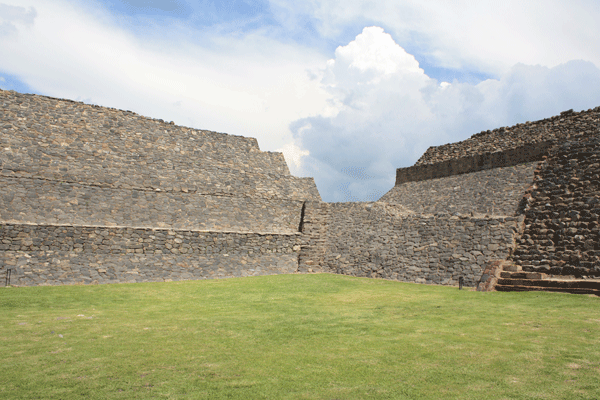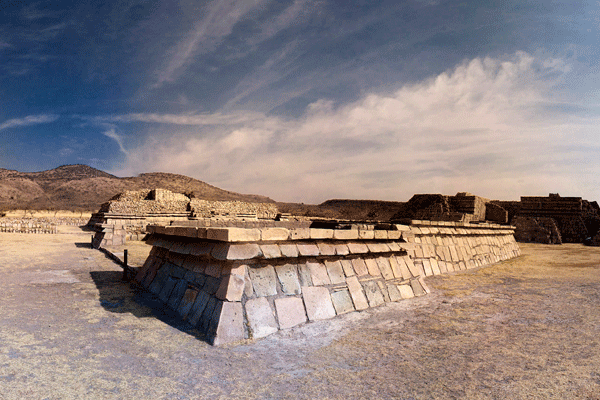ARCHAEOLOGICAL SITES
.
Guanajuato cuenta con algunos de los centros ceremoniales más característicos y relevantes del bajío, recorre la historia precolombina de las civilizaciones mesoamericanas que habitaron este territorio descubriendo las zonas de Plazuelas, Peralta, Arroyo seco, Cañada de la Virgen, y El Cóporo.
Disfruta de esta experiencia histórica.
CAÑADA DE LA VIRGEN

The archaeological site Cañada de La Virgen, in San Miguel de Allende, is a pre-Hispanic settlement located at the northern region of Mesoamerica. The ancient pyramids and buildings in the area were once used as observatories to study celestial bodies and phenomena. The design of the site is a testament to the relevance and impact that astrology had in the lives of Mesoamerican civilizations and their agricultural practices. The inhabitants of this semi-arid area were also hunters and gatherers that would habitually engage in trading ceremonial objects with other settlers in the region.
The site also served as a vantage point of the Laja river watershed, making Cañada de la Virgen significant not only for religious and scientific purposes but also military. The site reached the peak of its glory in the years 600-900 A.D., during the Epiclassic period of Mesoamerica.
Cañada de la Virgen was never inhabited; it was exclusively used for astrology and ritualistic practices related to agriculture, hunting and gathering. The acoustics of the site are remarkable; speakers need not raise their voices to be heard, a desirable feature considering its religious and scientific nature.
Cañada de la Virgen was also an important hub of the commercial routes of Mesoamerica.
The site consists of five clusters of buildings; three of these clusters have been made fit to receive visitors. Cluster “A” or Casa de los Trece Cielos; Cluster “B” or Casa de la Noche más larga; Cluster “C” o Casa del Viento.
EL CÓPORO

This all-important pre-Hispanic settlement was inhabited between the years 500 and 900 A.D., located at the northern frontier of the territory known as Mesoamerica. The architectural elements on site, pottery pieces and tools made of stone suggest a close connection with other civilizations, especially with those that inhabited the regions of San Luis Potosí, Zacatecas, Jalisco and El Bajío area.
ARROYO SECO

Located in the city of Victoria, the scenery at this archaeological site consists of a plain and two small hills; the vast presence of rock art paintings in the area make of Arroyo Seco one of the largest collections of this ancient art form in the country and one of incalculable historic value for humanity.
The paintings gather a remarkable number of ancient writing symbols and iconography.
The site was once home to hunters and gatherers of native civilizations, the art they created in rocks and caverns reflect their ways of life and their understanding of the universe.
PERALTA

One of the largest archaeological sites in the state of Guanajuato, located in Abasolo, Peralta was once a civic and ceremonial center inhabited during the years 300-900 A.D. On account of the large scale of its ancient buildings, Peralta was one of the six largest pre-Hispanic settlements in El Bajío region and one of the largest ceremonial centers in the west of Mexico.
The architectural design of the site is most notable for the use of six out of eight ancient techniques used in mound architecture and sunken patio architecture.
Thanks to the proximity of the Lerma River, the natives that populated the area engaged in the practice of seasonal agriculture on nearby flatlands and mountainsides.
PLAZUELAS

Located at the south foothills of the Pénjamo Sierra, and to the southwest of the Guanajuato sierra, the archaeological site of Plazuelas is home to the ruins and vestiges of one of the most prominent ancient pre-Hispanic settlements in the region. Designed as an open-air space, the site blends in seamlessly with the landscape, in perfect harmony with the mountainous terrain around it. This settlement was inhabited between the years 450 and 900 A.D., during this period of time the population density in Guanajuato reached the highest in record.
